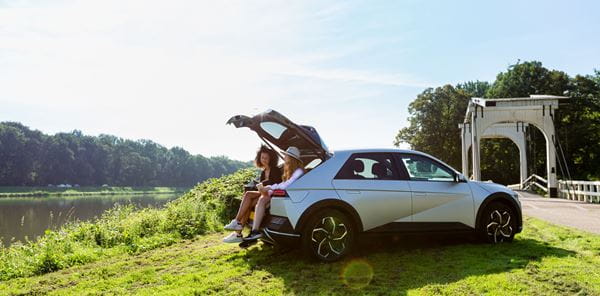
Euronorm becomes stricter again: what does it mean?
To protect our environment and make mobility more sustainable, Europe has been working with the Euro standard since the 1990s. Every so often, this gets a solid update with stricter rules to encourage car manufacturers to build more environmentally friendly vehicles. From 2025, plug-in hybrids will be subject to the Euro 6e-bis standard. And meanwhile, Europe reached an agreement on the Euro 7 standard. You can read exactly what that means below.
Since September 2023, the Euro 6e standard will apply to newly homologated vehicles. This standard will be rolled out in three phases. Thus, from 1 January 2025, the Euro 6e-bis standard will come into force for new type-approvals. This standard will have a major impact on new plug-in hybrids (PHEVs). From then on, these vehicles will be subject to more stringent test methods to obtain a more realistic representation of their CO2 emissions.
**Utility Factor will be adjusted ** Because plug-in hybrids have low CO2 emissions on paper, they are attractive when it comes to taxes. The actual emissions of a PHEV do depend on the driver's driving behaviour. You can drive a PHEV almost exclusively electric, but you can also never charge it and always drive on fuel. This is why a Utility Factor (UF) is applied when calculating emissions. That Utility Factor depends on the electric range. The further the vehicle can drive on electricity, the higher the Utility Factor and the lower the determined CO2 emissions.
In recent years, however, it became clear that the current Utility Factor curve was not representative. PHEVs emit more CO2 than the official emission value according to the curve. Therefore, the European Commission is now adjusting this curve to more accurately reflect the average consumption of PHEVs.
PHEV loses tax advantage
Adjusting the Utility Factor will cause measured CO2 emissions to rise sharply, and in some cases double. In an example from the International Council on Clean Transportation (ICCT), it became clear that the emissions of a BMW X1 xDrive25e (old model) suddenly increased from 45 grams per kilometre to 96 grams per kilometre. Combined with the Belgian government's previously introduced and announced tax measures, the PHEV thus loses its tax advantage.
Finally agreement on Euronorm 7
Meanwhile, an agreement was also reached on the Euronorm 7. This standard has been the subject of debate between various stakeholders for years. Environmental organisations want to see emissions fall as much as possible, while manufacturers prefer not to have too strict rules. There are also different camps at the political level. That is why the drafting of Euronorm 7 has dragged on for several years. The European Parliament plenary approved the new Euro 7 standard. Now all that remains is to negotiate the final law with the European Union member states.
Less particulate matter
With the Euro 7 standard, Europe aims to further reduce particulate matter and nitrogen dioxide emissions. Compared to the current Euro 6 standard, emissions from passenger cars would be reduced by as much as 35 per cent. Remarkably, the new standard also includes rules on emissions of particulate matter and plastic particles released through tyre and brake wear. By reducing these emissions too, our air quality should improve.
Originally by 2025, now by 2030
The first version of the Euro 7 standard was proposed by the European Commission some 2 years ago. Back then, the intention was that the new standards would come into force in 2025. However, there was a lot of criticism of the proposal from different camps. As a result, the new Euro 7 standard is somewhat less stringent than originally intended. A compromise, in other words. For instance, the deadline will be moved up. From the moment the agreement is finally approved, passenger car and van manufacturers will have another 30 months to comply with the standards. For buses and trucks it will be 4 years, and small manufacturers producing less than 10 000 vehicles a year will have time until 1 July 2030.
A little bit stricter
Because a compromise has been chosen, the Euro 7 standard will be only slightly stricter than its predecessor. It should, however, reduce particulate emissions from tyres and brakes by 27 per cent by 2035. These rules will require manufacturers to implement systems to capture particulate matter. How these new technologies will affect the price of vehicles is not yet clear.
Standards for emissions generated by engine combustion have barely evolved. Because it is very expensive for manufacturers to further reduce emissions from ICE vehicles, this tightening has been stopped. Moreover, there is a strong case that with rapid electrification, there is no need to invest heavily any more in technology to make internal combustion engines more environmentally friendly. By 2035, internal combustion engines in new vehicles would disappear anyway.



